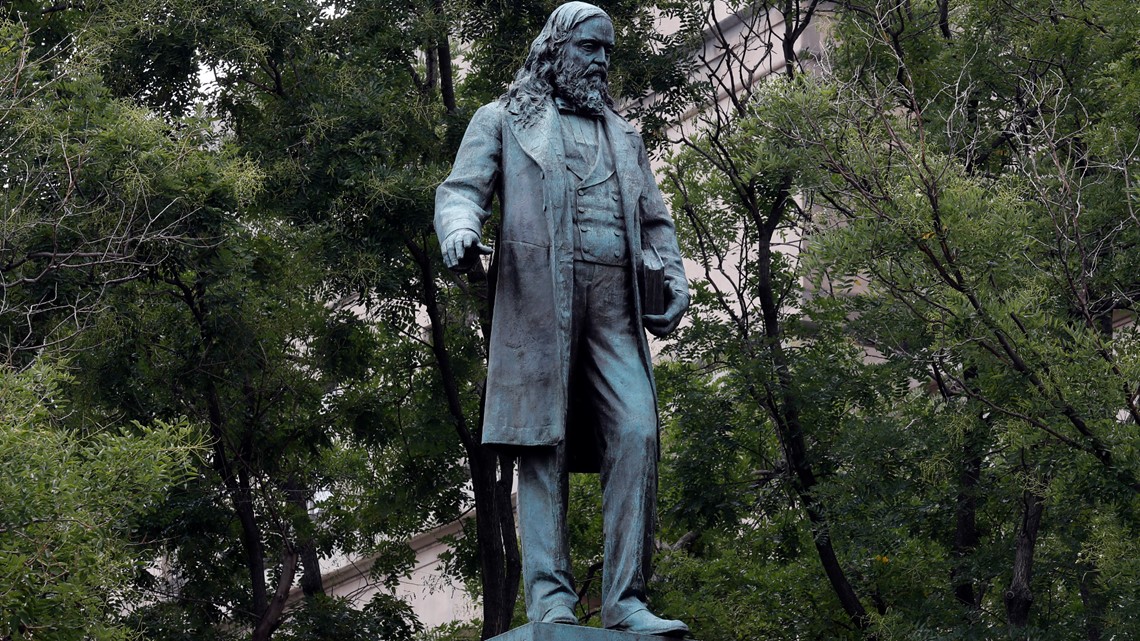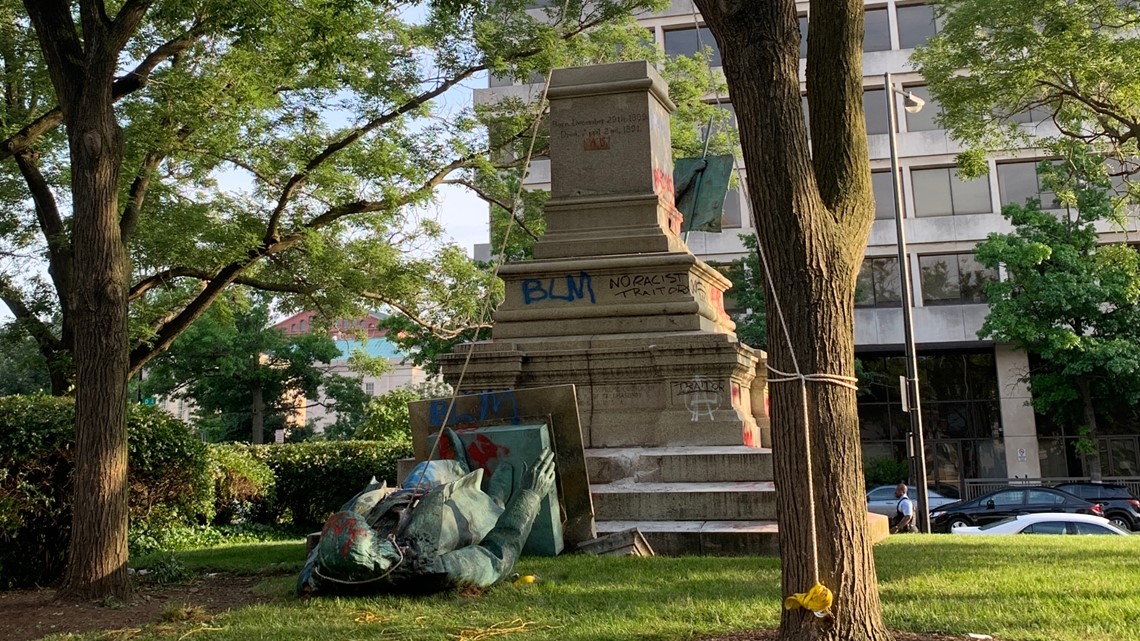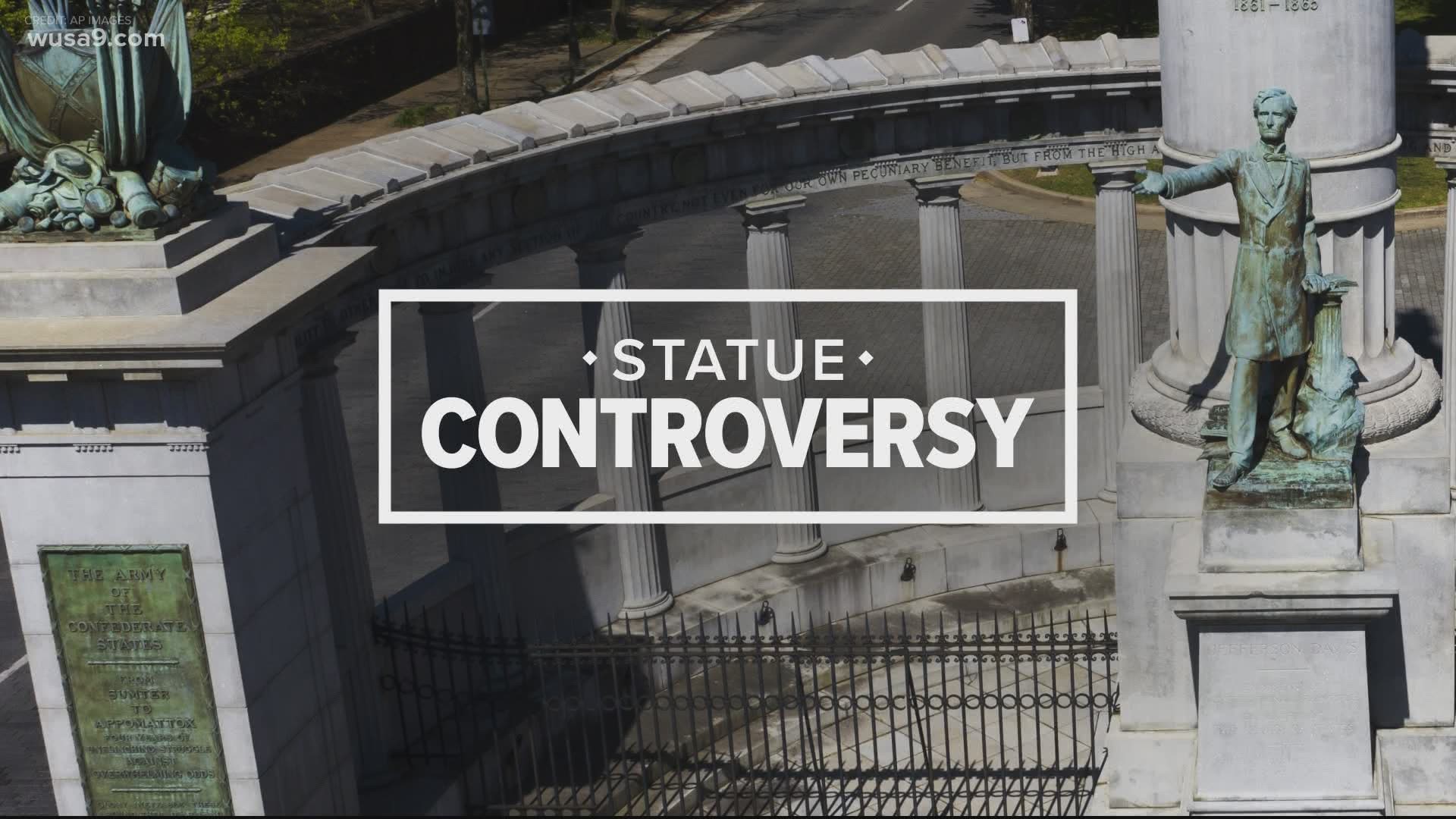WASHINGTON — When the statue of Confederate General Albert Pike fell to the ground late Friday evening, jubilant cheers rang out across Judiciary Square where the monument had stood tall for 100 years prior.
It was the end of Juneteenth in the District, a day packed full of reflection, celebration and protests.
"No justice, no peace, no racist police!" Protesters chanted as the 11-foot marble and bronze statue, located right outside of MPD headquarters, fell backward under the weight of dozens of protesters pulling on straps wrapped around the general. It had been the only outdoor sculpture in the District depicting a Confederate general — one of 18 Civil War monuments in D.C.
While Confederate effigies have long been a source of controversy across the country, increased tension and racial equality protests ignited by the death of George Floyd in Minnesota — coupled with the anniversary of the emancipation of slaves — only heightened demand for removal.
Who Was Albert Pike?
The statue was originally erected as a salute to Pike's time as a Freemason.
Born in Boston, Massachusetts in 1809, Pike planned on attending Harvard but ultimately could not afford tuition. Instead, he roamed to New Mexico and eventually Fort Smith, Arkansas, where he taught law and became politically active. In 1850, he organized the Know-Nothing Party, which campaigned on anti-immigration beliefs and emphasized the use of slaves as more "efficient than farm labor."
Pike was also pro-Indian, representing a handful of Native American tribes in settlement cases against the government. That lead him to be named the commissioner of Indian Affairs for the Confederacy at the start of the Civil War, where he was then named a brigadier general.
His time as a general in the Confederacy lasted a little over two years before he was charged with misappropriating funds and letting his troops mutilate Union soldiers in an 1862 battle.
Arguing with other Confederate leaders after being accused of treason, Pike ultimately mailed in his resignation letter and retreated to Tennessee — where civil rights leaders said he was rumored to have wrote the rituals of theKu Klux Klan, although various history blogs have said this was not certain.
A poet and lawyer, Pike was responsible for growing the biggest Scottish Rite branch of the Free Masons, who considered him an influential leader and who paid for the statue, which was first commissioned in 1901. He moved into DC's Scottish Rite temple in 1873, eventually dying in the District in 1891.
The statue itself depicted Pike as a Freemason, not as a soldier, which was why Congress granted permission for the statue to be erected.
According to Congresswoman Eleanor Holmes Norton, as of late, the Freemasons decided to support the statue's removal.
“That Albert Pike statute is up here only because the Freemasons erected it, and Albert Pike was a Freemason. To the credit of the Freemasons, they joined me in wanting the statue to be taken down and I give them all due credit to that,” Holmes Norton said.




The controversy over the statue isn't new.
Councilmember Bill Lightfoot initiated legislation calling for the removal of the statue back in 1992. In 2017, protesters circled the monument after a Unite the Right rally, calling for it to be torn down, a sentiment echoed by DC Council. And in July 2019, Congresswoman Eleanor Holmes Norton introduced a bill to remove the statue but still preserve its history.
"I have no doubt I could have gotten that bill through, but the people got here before due process and the process that Congress could do it," Holmes Norton said. “If you were to rank Confederate generals who should not be honored, Albert Pike would be at the top of the list. He was forced to resign even from the Confederacy."
DC Council tweeted on Friday that they were "unanimously" renewing that call, asking for Congress to remove it, inciting reaction from President Donald Trump, who said D.C. Police who watched the protesters tear down and burn the statue but did intervene — were "not doing their job."
On Saturday, June 20, the toppled statue was removed by the National Park Service, although officials would not say where the statue would be relocating. The Smithsonian told WUSA9 Saturday morning "it did not have plans to acquire any Confederate statues."
"I would like these statutes to be placed in museums and the history of the statute told so that we don't lose this moment in history," Holmes Norton said. "We don't want to obliterate our history. The way to keep that history alive so we can never repeat this kind of history again."


